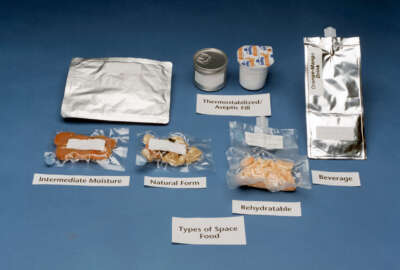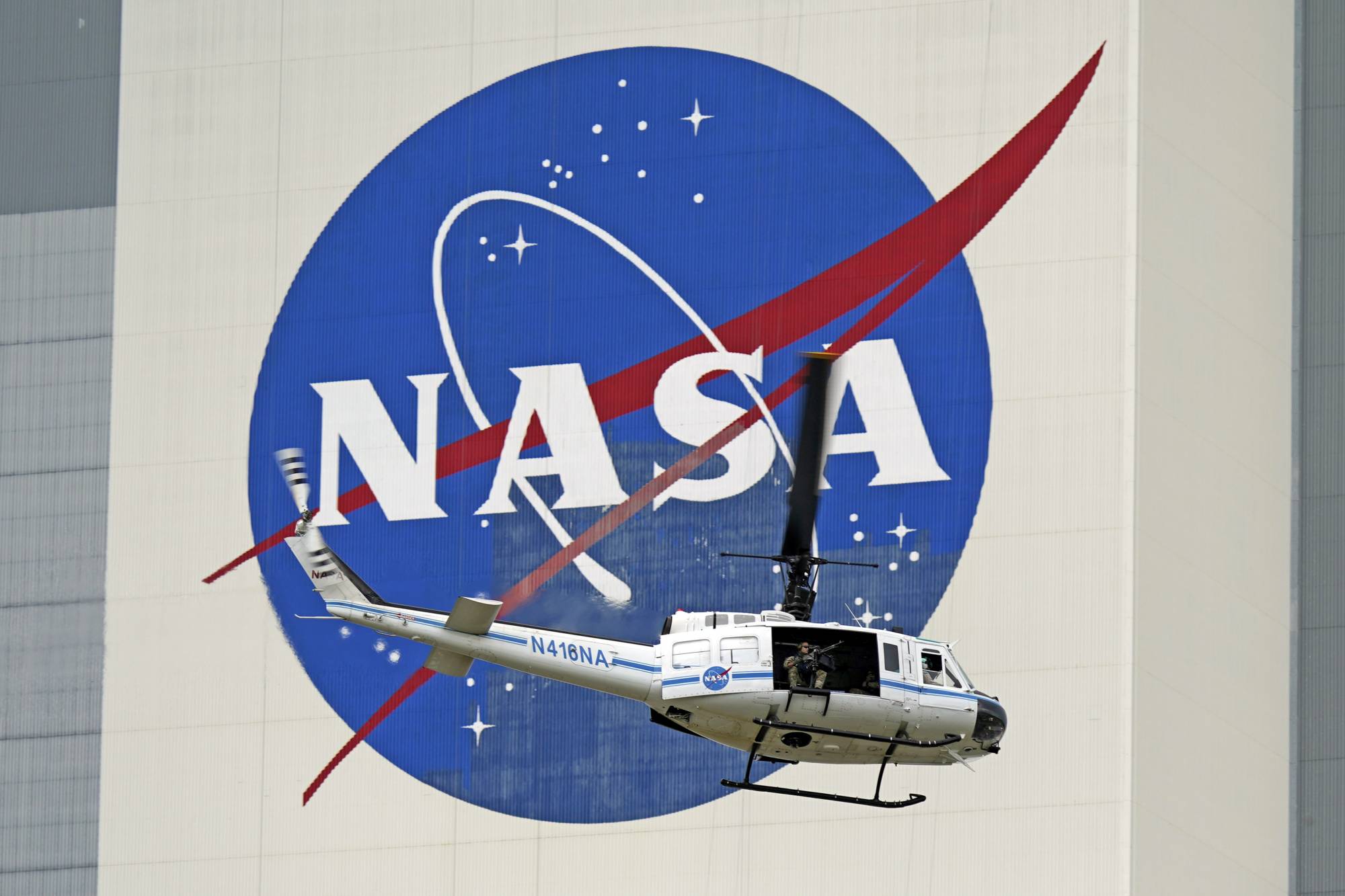Hubbard Radio Washington DC, LLC. All rights reserved. This website is not intended for users located within the European Economic Area.
NASA plows ahead on program to ensure nutrition for astronauts headed to Mars
For what's going on with round two, the program manager for NASA's Centennial Challenges, Monsi Roman returned to the Federal Drive with Tom Temin.
Best listening experience is on Chrome, Firefox or Safari. Subscribe to Federal Drive’s daily audio interviews on Apple Podcasts or PodcastOne.
Like “Iron Chef” contestants, researchers at NASA are pushing ahead on a program to develop food systems for astronauts who will be in space for months, years even. Now, last year, we reported on a first round of 18 grants made by the Deep Space Food Challenge program. For what’s going on with round two, the program manager for NASA’s Centennial Challenges, Monsi Roman returned to the Federal Drive with Tom Temin.
Interview transcript:
Tom Temin: Monsi, good to have you back.
Monsi Roman: Good morning to you.
Tom Temin: So in the first round, there were 18, I guess, academics and industrial operations that had ways, at least ideas for sustaining astronauts in the very long term, but thinking totally outside of the box with respect to how astronauts have traditionally been fed. And what happens now?
Monsi Roman: So we open the phase two of this competition when we’re asking not only those 18 teams that won a prize first for their ideas, but anybody to come and give us new ideas. And these ideas now have to be demonstrated towards the end of the competition. So not only you’re going to bring us the ideas, but now you have to demo how you will get those ideas to reality.
Tom Temin: And so 18 of the grantees then made it to round two, and then it sounds like this will be either do or die for them?
Monsi Roman: Well, yes, that is correct. But we’re also inviting for a short amount of time until Feb. 28, we open the registration to anybody else that might have not heard of the competition before. So most definitely, we are welcoming our 18 teams that won. We are welcoming the other teams that participated in there. But we’re also welcoming until Feb. 28, the registration of brand new teams that did not participate in phase one.
Tom Temin: And they will just do this on their own nickel, then?
Monsi Roman: That is correct. They have to do the development on their own nickel to begin with, yes.
Tom Temin: And do you have people signing up and signing to throw their hat in the ring, while we’re throwing cliches around here, that want to also participate?
Monsi Roman: That’s correct, we do have a good amount of people already registering. And that is why we’re closing the registration at the end of February. So we have time to see who we have get the right amount of judges and amount of webinars to educate our competitors throughout the process that it’s going to take to get to the final of this competition.
Tom Temin: And I think as we spoke earlier, to sustain people for months in space, and not just a few days, or even a couple of weeks, it’s not a matter of how many cans of tuna fish, or how many boxes of cornflakes you can fit into the crevices, but whole new ways of thinking about creating food and so on, what are some of the leading domains of ideas, let’s say, that are coming up here?
Monsi Roman: So it’s gonna be unfair to say the leading domain because the truth is, what we’re looking is for a variety of food options. So it depends what you feel like eating one day, what will be the best for you and what you feel like that, the next day, we don’t tend to like the same things or eat the same things every day. So I think they bring a variety and they bring many things, in addition to the variety of their menu, if they bring the part of getting the astronauts to be in charge of growing or creating, bioprinting perhaps, using cellular culturing to grow something, some kind of a part of a fruit, or perhaps baking a piece of bread or growing some mushrooms that they can eat.
Tom Temin: That presumes there is a mushroom that’s good to eat.
Monsi Roman: I love mushrooms. So there’s lots of really good ones out there to be part of a diet that could be amazing for people. So yeah, there’s so many things. So the truth is, we are not asking for what is the best food we’re asking for the variety, we are increasing the variety for the crew that will be nutritious, that will have something for them to be part of the growth of it, or the creation of it, and will supplement what you just talked about, the cornflakes and the things like that that you will have there.
Tom Temin: Well salt and pepper is easy to store for a few months or so. We’re speaking with Monsi Roman, she’s program manager for the Centennial Challenges Program at NASA. But it seems like the underlying idea for all of these sub ideas is sustainability and a process that would create the food as opposed to trying to just freeze dry it all into the size of a poker chip and stuffing it onto the spacecraft.
Monsi Roman: That is correct. It’s also about that process of when you’re cooking, you can smell it too. And so it’s just the whole experience also. So yes, absolutely. It’s about varieties, about nutrition, it’s about sustainability. And that can have a lot of applications here on Earth. So he’s not thinking just, we’re going to have a bag of whatever but where did the bag come from? Where’s the bag gonna go after I finished eating it, and so on and so forth.
Tom Temin: And in this round two the original round one participants plus the new ones that sign up between now and the end of the month, what do you expect them to show you then at the end of the whole round of competition, which I guess is sometime after Feb. 28?
Monsi Roman: All these ideas that are, some of them that sounds completely crazy, are feasible, or have at least a degree of visibility that we can explore. And also, something that is important in this round is the safety of this food. So now you’re going to be growing or creating food over and over and over again, right, instead of disposing of the bag after you eat it, and so on. Now, we have to start thinking, okay, so if we grow a plant, and then we take the product, and then we grow it again, will the new product be safe? If we bio print something, how safe it is for the crew, while their bio printing, or once you bio print it can you eat it immediately, and all those kinds of things? Microorganisms are something else, we have dealt with them obviously now more than ever, and so all those things will become an important part of it.
Tom Temin: Will chimpanzees or goats become the so-called taste testers for these things, just so you know they don’t keel over the second they swallow them?
Monsi Roman: I don’t think so, that is an idea that I have never heard before. But no, it will be off at some point. But for that, NASA has a process that has to go through in order for humans to be able to taste it. So no, we’re not planning to kill anybody.
Tom Temin: Alright, that would be a bad headline, “NASA engineer keels over after tasting space food.” But –
Monsi Roman: Yeah, that’s not what we’re trying to do at all. No, no, not at all. We are, safety for us is one of the most important thing and kidding aside, safety is super important for our crew and for the success of the mission. NASA has very strict protocols to make sure that those things do not happen.
Tom Temin: Yes, because over time, things can transmute and change and so forth, or can develop in some strange thing that came in that you were unaware of at the launch could then later manifest itself. So you really have a lifecycle approach, as well as just a efficacy approach.
Monsi Roman: That is a very well put way of thinking about this, exactly right. We’re not only looking at the first crop, or the first batch of whatever is produced, but now is the sustainability part of it, where it’s gonna have, iterations and over and over again, and like you said, there’s some things that you might not be able to predict by only growing or producing for the first time. But doing it in some kind of cyclic event, then you might find out about it.
Tom Temin: And since this is your second interview with us, we should probably point out that you will not personally be around necessarily for the taste testing, because you’re going on to a new job at NASA.
Monsi Roman: I am, yes, I am moving to a new job. These job has been amazing for the past six years, and I’m looking forward to my new job where I’ll be working with the commercial sector as part of NASA still but at the commercial sector, looking at the possibilities of having experiments in suborbital flights, with our civil servants leading those experiments. So it’s super interesting and game changing and excited to be part of that.
Tom Temin: Well, we’ll have you back when you’ve been there a little while and you can tell us what’s going on there.
Monsi Roman: Absolutely, happy to.
Tom Temin: Monsi Roman, at least for the moment, is program manager for the Centennial Challenges Program at NASA. Thanks so much for joining me.
Monsi Roman: You’re welcome, anytime.
Copyright © 2024 Federal News Network. All rights reserved. This website is not intended for users located within the European Economic Area.
Tom Temin
Tom Temin is host of the Federal Drive and has been providing insight on federal technology and management issues for more than 30 years.
Follow @tteminWFED




